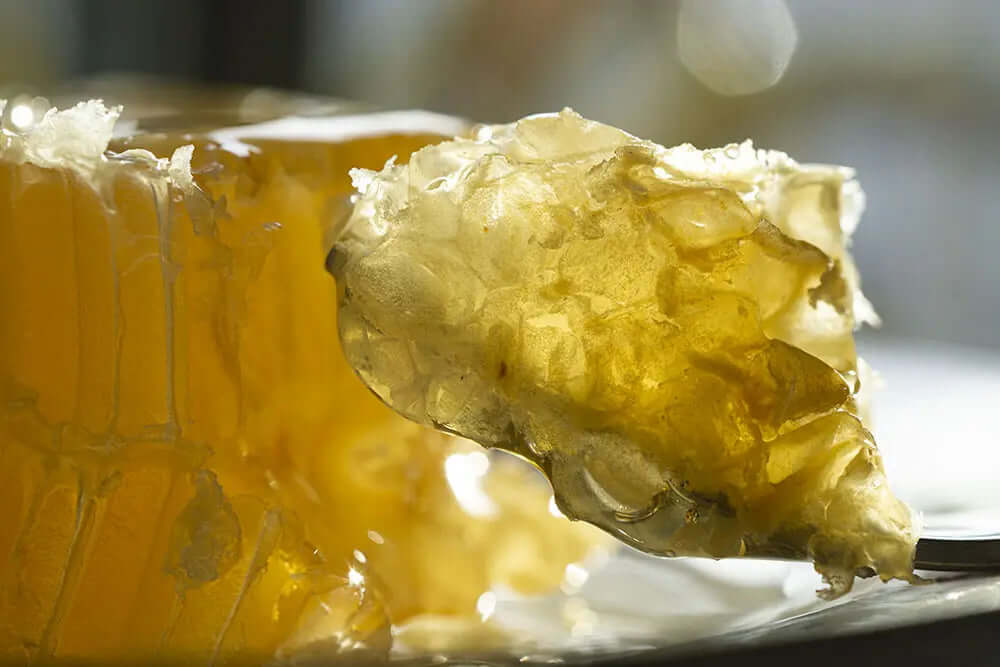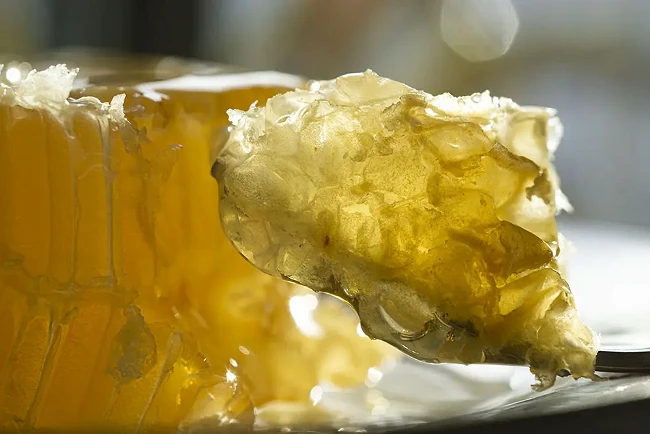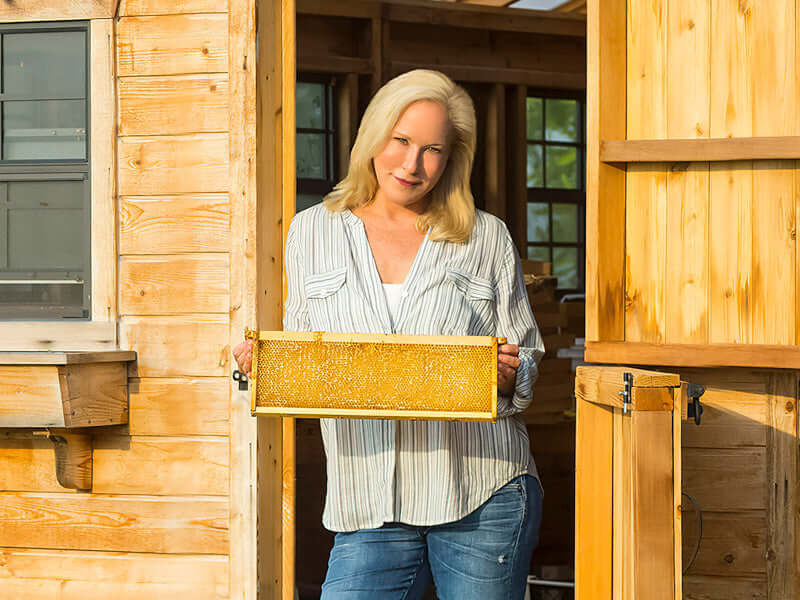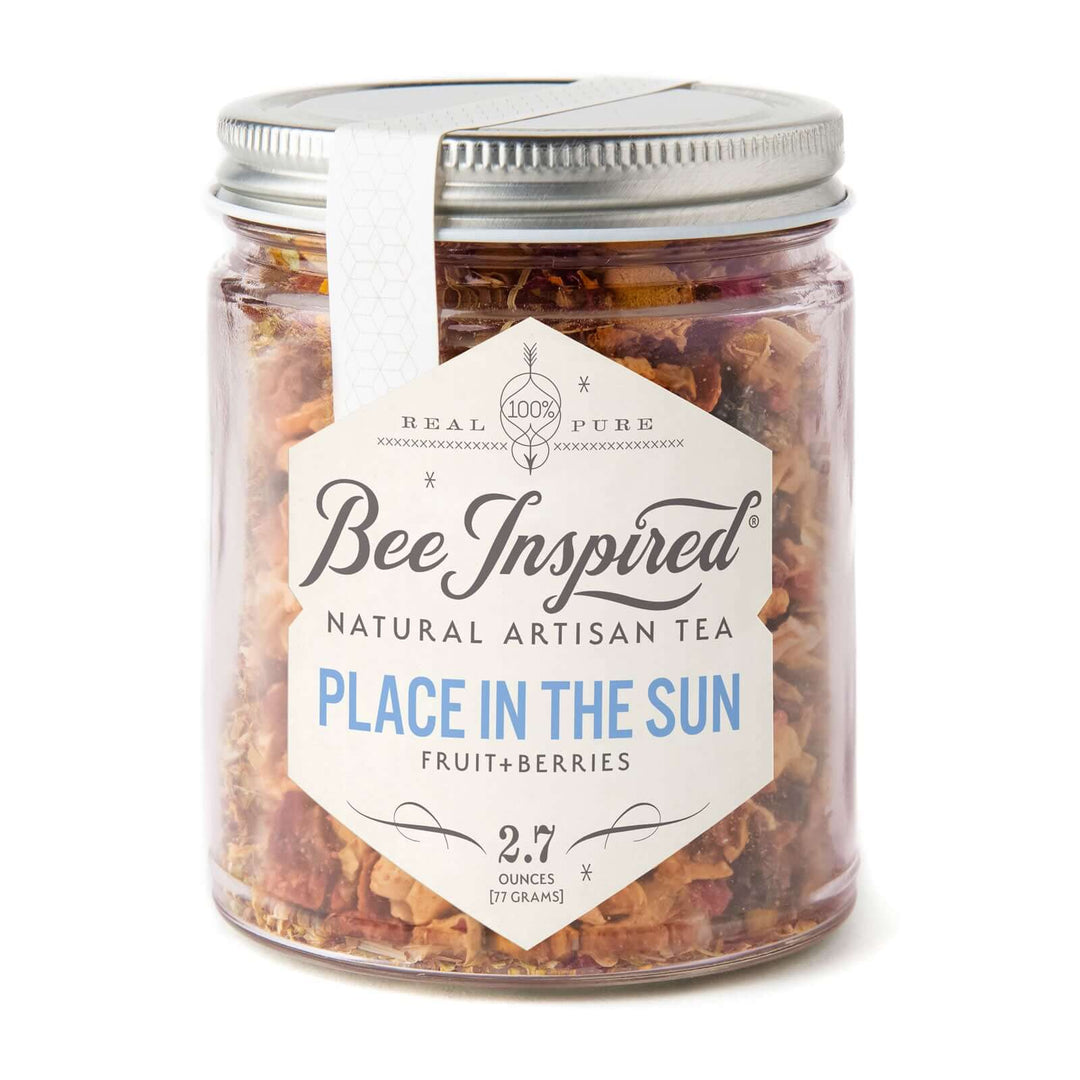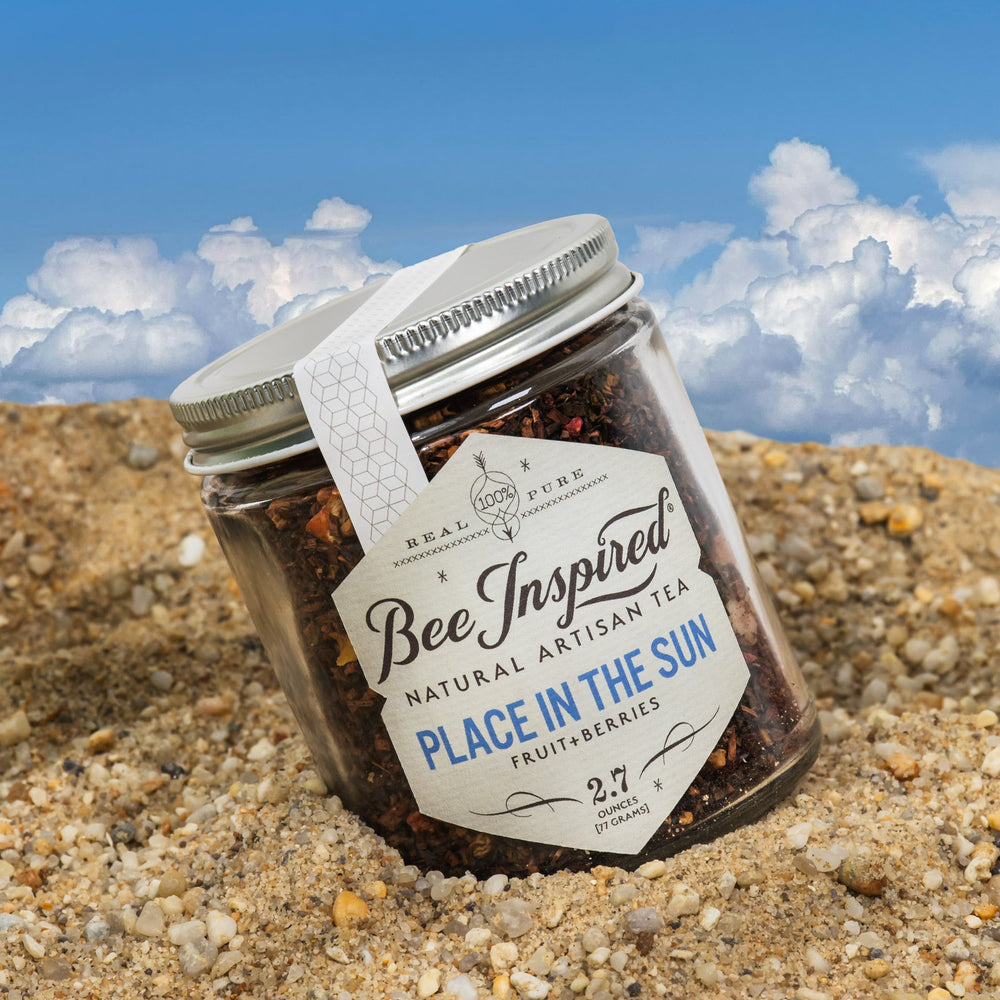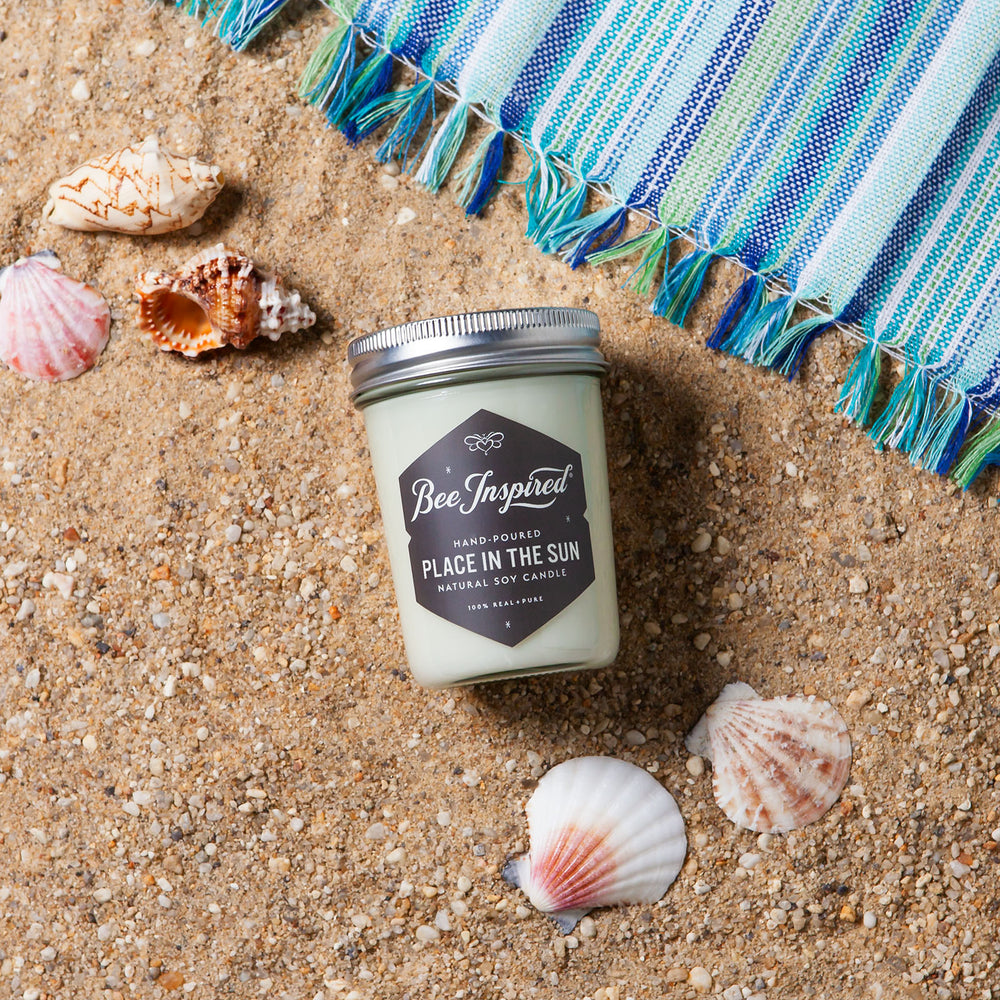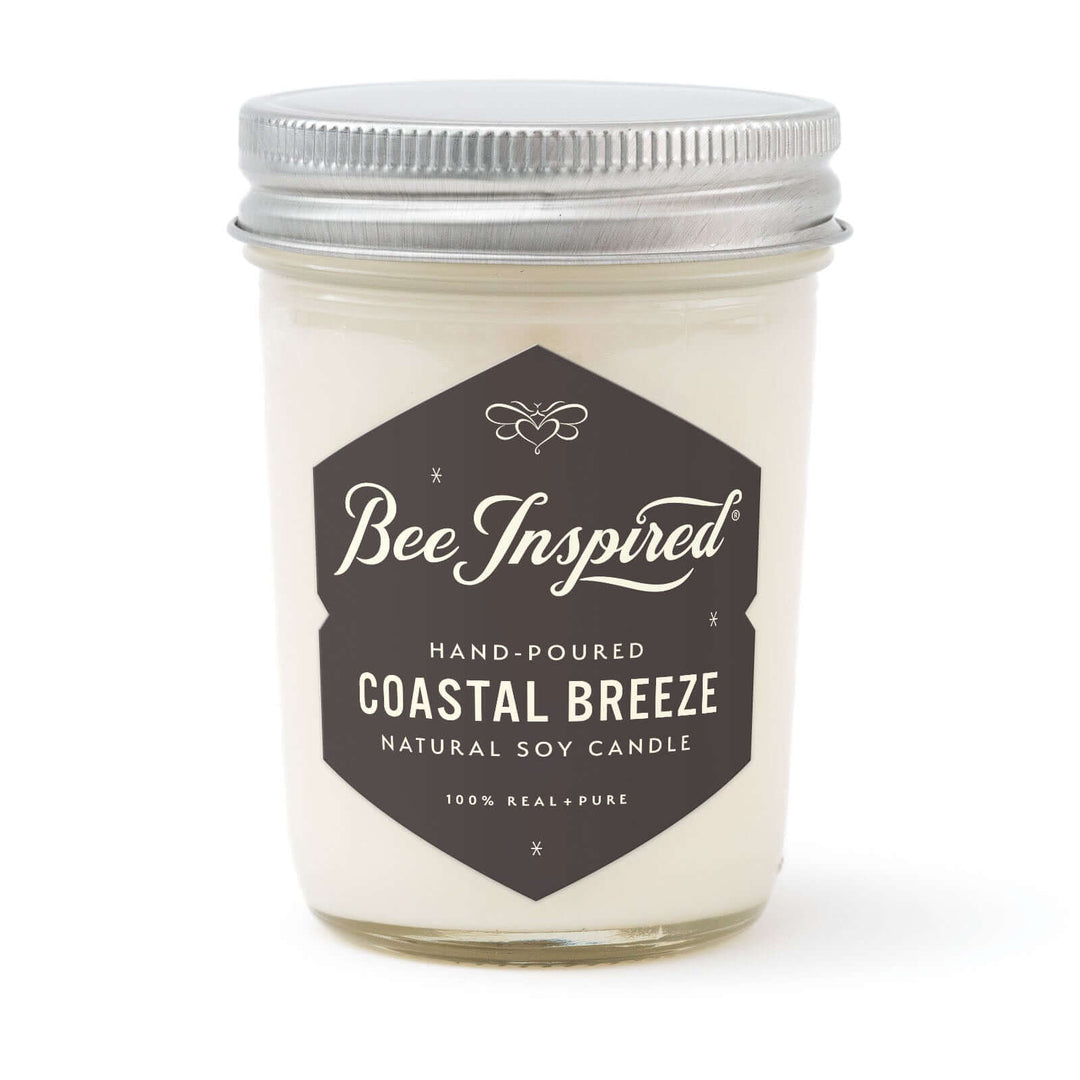Raw Honeycomb: can you eat it? The answer is a resounding yes. Both the honey and the wax in honeycomb are safe to consume, making honeycomb edible and a delicious delicacy with a unique texture and flavor that varies based on the bees' pollination sources. There is something almost magical about the sweet yet slightly sour burst of flavor that comes from each bite-sized morsel. It has been enjoyed for centuries, and its rich history of being a coveted treat associated with celebrations lends it an extra layer of nostalgia — one that adds to its unique flavor profile even more.
Honeycomb is natures chewing gum
However, it is important to note that individuals allergic to bee venom or pollen should avoid consuming honeycomb due to potential health risks.
Let’s dive into everything there is to know about storing honeycomb: how it’s made, where you can find it, and all the amazing ways you can enjoy this special delicacy. Grab your favorite spoon or piece of rustic and crusty bread, and let’s get started!
Can You Eat Raw Honeycomb? Yes, You Can!
Eating honeycomb is a truly unique experience. Raw honeycomb is sliced right from the frames of a beehive and contains honey in its most natural form. Compared to liquid honey, such as our Wildflower Honey, raw honeycomb not only offers the benefits of raw honey but also includes beeswax, providing additional health and digestive benefits. Once chewed, the wax shell melts away, revealing the sweet and complex flavor of raw honey that is straight from nature. Not only a satisfying snack, it’s good for you as it provides a wealth of vitamins, minerals, antioxidants, and natural enzymes in addition to its incredible flavor.
What does honeycomb taste like?
The answer is simple, the flavor of honeycomb varies with the flora that surrounds the hives where the bees collect nectar. Each region is different. Ours comes from a beekeeper who specializes in raising comb in Northern Pennsylvania in United States. When tasting our raw honeycomb for the first time, people notice how different it tastes from store-bought honey that has been processed and filtered. The taste is often described as earthy, floral, or even fruity due to the fact that bees collect nectar from various flowers to store in their hives. It also crystallizes over time and that adds a soft yet crunchy texture, making it perfect for spreading on warm toast or crackers.

Is Eating Raw Honeycomb Safe?
It is perfectly safe to eat honeycomb! Of course, we don’t recommend scarfing down a whole block, but having a chunk on your toast, over oatmeal, or in your tea is delicious now and then.
Raw honey, specifically from honeycomb, contains enzymes that give it antimicrobial and antibacterial properties, which can help fight infections, protect the gut against certain parasites, provide allergy support, and reduce coughing in children.
Fresh-made beeswax from the hive is soft and chewable. Raw honeycomb by itself is almost like chewing gum. Lots of our older customers tell us that they used to chew it right from their own grandparent’s hives when they were children.

How Long Does Raw Honeycomb last?
Honey and honeycomb are the perfect treats with an indefinite shelf life. If you want to store the comb between use, store it in your freezer. Remove from the freezer and allow to thaw for a few hours.

Can I Bake with Honeycomb?
Baking with honey has a long-standing tradition, dating back to ancient times when indigenous peoples first discovered its natural sweetness. Honey has been used as a versatile ingredient in various recipes, from breads to desserts, offering a healthier alternative to refined sugar. While we have yet to explore baking specifically with honeycomb, it remains an intriguing idea on our culinary agenda. The beeswax in honeycomb could impart a unique flavor and act as a natural thickener, while the raw honey itself serves as a substitute for processed sugar, enhancing both the taste and nutritional value of baked goods. For more insights on using honey in your baking endeavors, check out our comprehensive guide on baking with honey.
Health Benefits of Raw Honeycomb
Eating Honeycomb is healthy in moderation. You can expect the same nutritional benefits from honeycomb as you do with honey. Athletes use it for energy before workouts and raw honey has even been proven to aid allergies.
If you are concerned about calories and carbohydrates, each ounce of honeycomb contains 115 calories, 27 grams of carbohydrates, 27 grams of sugar, and 1.5 grams of protein.
There are many other benefits of raw honeycomb to enjoy:
-
Raw honeycomb nutritional value: It contains not only honey but also other beneficial components such as bee pollen, propolis, and royal jelly. These substances are rich in vitamins, minerals, enzymes, antioxidants, and other bioactive compounds. Consuming honeycomb can provide a natural and holistic source of nutrition, supporting overall health and well-being. Additionally, honeycomb can serve as an alternative to refined sugar, making it a healthier option for sweetening foods.
-
Raw honeycomb skin care benefits: It’s used in various skincare products due to its nourishing and moisturizing properties. It can be incorporated into homemade masks, milk and honey bath soaks, scrubs, or soaps to promote healthy and glowing skin. Honeycomb’s natural antibacterial properties may also help in combating acne and soothing skin inflammation.
-
Raw honeycomb aids in digestion: Consuming honeycomb, along with the honey it contains, can support digestion. Honey is known for its prebiotic properties, meaning it serves as food for beneficial gut bacteria. This can help maintain a healthy gut microbiome and promote digestive health.
-
Raw honeycomb in cooking: It can be enjoyed as a delicacy on its own or used as a sweetener and garnish in various culinary creations. The waxy texture and unique flavor of the honeycomb add an interesting element to dishes, desserts, cheese boards, or charcuterie platters. Honeycomb is also a great addition to homemade desserts, providing a natural sweetness and unique texture.
Where Can I Buy Raw Honeycomb at a Local Farmers Market?
We may be a little biased, but we believe our raw, locally sourced honeycomb is the best! We sell honeycomb in our honey retail store, Bee Inspired Honey House in Owings Mills, Maryland and you can also order it online to be shipped directly to you. Additionally, you can find honeycomb at your local farmers market, which often features products from local beekeepers.
Where Do We Source Our Raw Honeycomb?
A beekeeper in Northern Pennsylvania responsibly harvests our honeycomb. We strictly source varietals that are harvested in the USA.
Honey bees play a crucial role in producing honeycomb, which they use to store raw honey, pollen, propolis, royal jelly, and even larvae. Usually, with a limited number of hives, beekeepers preserve the uncapped comb after harvest so that the bees have an easier time producing honey next season.
However, our beekeeper keeps many hives, which he designates for fresh virgin wax for comb packaging. Because he specializes in this art form, taking a small amount of comb doesn’t impact the colony’s health.

How is Raw Honeycomb Made?
The honeybee has a gland that secretes wax. Bees are excellent housekeepers, and it is their instinct to pull the secreted wax off each other to keep their hives clean and orderly.
As they collect the wax, they make the comb working with the wax by chewing the wax and mixing it with propolis, pollen and honey to produce the structure. Honeycomb is used by honey bees to store honey, pollen, and their larvae.
The perfectly efficient hexagonal cells serve as strong storage vessels for honey and provide homes for the queen to lay her eggs and hatch young bees.

If you wondering how to eat honeycomb by itself, cut off a wedge from the comb with a spoon and enjoy it like candy. You can chew the wax as gum before spitting it out or in other ways.
How to Eat Raw Honeycomb
You can eat honeycomb in various ways, and different comb types work better with different foods. The flora surrounding the hive determines the color and the flavor of the wax and the honey. Brand new wax is always very bright, and creamy white.
Depending on the color of the honey inside the comb, the flavor of the honey and the wax will taste different: darker honey is earthier, and lighter honey is often mild. Dark honey is delicious on rustic bread — lighter options pair well with cheese, fruit, and nuts on a charcuterie board. Once you get the hang of it, it's easy to pair different foods with honey.

Here are some specific recommendations for how to eat raw honeycomb:
-
Drop a chunk in your hot tea. The wax and honey melt into the tea, and I believe that this combination helps to soothe allergies.
-
Spread it over baked goods. Just cut off a chunk, and use a butter knife to smear it into crusty toast or warm bread. Fresh pumpkin muffins with a bit on top? Delicious! Fluffy, toasted bread with a bit of fresh comb? Divine.
-
A dehydrated comb may be used as a garnish on baked goods.
-
Drop a chunk or two over your oatmeal. It works beautifully on granola as well! Darker comb will give you a rich molasses-y flavor. If you want sweeter, floral honey, go for something lighter in color.
-
Add it to a a cheese platter or with a simple chunky salad. Paired with something more acidic and salty, like bleu or feta, honeycomb is incredible. The sweetness plays off the sharpness of these cheeses so well that you’ll be addicted. Honeycomb also pairs wonderfully with blue cheese on a cheese board.
-
Pair it with fruit. We like to use it with apples and pears. Speaking of pears, drop a chunk over our caramelized pears to make the dessert extra special! Honeycomb pairs well with nuts, berries, bread, and even chocolate.

How to Store Raw Honeycomb
We sell ours in plastic cases that are air-tight. We still recommend storing them (for short-term storage) in a plastic bag after opening. It's honey, so it will make a little mess, which will be worth every minute!
We recommend long-term storage in the freezer. Pull it out the day before you use it and allow it to thaw. It may crystallize over time, but we think it adds to the texture.
How Do You Use Raw Honeycomb?
What's your favorite way to enjoy the nectar of the bees? Have you enjoyed one of the many benefits of honeycomb? Next time you're looking for an exciting treat filled with flavor and health benefits, consider treating yourself (or someone else) to some delicious raw honeycomb!
Take a picture and tag us on . We always love to see what you're up to and how you enjoy your honey!

Honeycomb FAQs
Is honeycomb spelled "honey comb" or is it one word "honeycomb?"
It is one word, spelled "honeycomb," not "honey comb."
What does honeycomb taste like?
Honeycomb has a sweet, floral flavor with hints of waxy texture. The taste is rich and varied depending on the type of flowers the bees visited and the nectar they collected. We're planning to create a video showcasing our team's ractions while tasting honeycomb, so stay tuned!
What do you use honeycomb for>?
Honeycomb can be used in a variety of ways:
- Eating directly: Enjoy raw honeycomb as a natural, sweet, healthy treat straight from the hive.
- Cheese pairings: Add raw honeycomb to a cheese plate with bread and fruits for a touch of textured sweetness.
- Bakery delights: Use raw honeycomb to garnish cakes, blend into pasty recipes, and pair it with toast for a delightful breakfast or snack.
- Gourmet dishes: Incorporate raw honeycomb into salads or entrees for an unexpected twist.
Is the wax from honeycomb edible?
Yes, the wax in honeycomb is edible. It provides a chewy texture and is safe to consume along with the honey.
What is honeycomb made of?
Raw honeycomb is made by bees from beeswax, which they produce naturally. Honeycomb consists of hexagonal cells used by bees to store honey and pollen and to house their larvae.
Can you digest honeycomb?
Yes, honeycomb is digestible. While the wax may not break down completely in the digestive system, it passes through without causing any harm. Enjoying honeycomb is a natural and nutritious way to experience honey, a true gift from nature!





